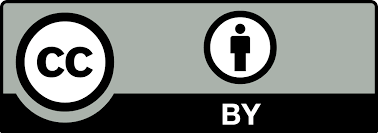Alerta transcends language barriers
DOI:
https://doi.org/10.5377/alerta.v5i2.14500Abstract
The English language is spoken by millions of people in the world. Throughout history, it has become the language of science due to its role in the dissemination of scientific knowledge and globalization1 . Publishing articles in English brings great advantages related to visibility and impact, as well as the possibility of acceptance in indexes such as Web of Science and Scopus2. That is why it was decided to invest in human talent that can translate our journal Alerta 100 % into this language.
Therefore, this new publication, volume 5, issue 2, is a dream come true because we delivered to the scientific community for the first time an issue translated entirely into English with each of the articles diagrammed in PDF, XML, HTML, e-Pub in both languages.
The content of this issue includes four case reports. The first one deals with the surgical approach of a brown tumor of the maxilla, in a patient with Sagliker syndrome; the second is about the diagnosis of four synchronous primary neoplasms in an adult; the third narrates the clinical manifestations of a fracture secondary to a mild trauma and the studies that confirmed an Ewing sarcoma. The three cases mentioned were treated in the radiology service of the Salvadoran Social Security Institute. The fourth and final case report of the Rosales National Hospital on Morris syndrome, characterized by complete insensitivity to androgens addressed by the endocrinology and urology specialties of the Rosales National Hospital.
Besides, an original article is included comparing the risk of SARS-CoV-2 infection after artificial and hybrid immunization in health personnel, sent by the Civil Hospital of Guadalajara in Mexico. Also, a dental article is published, entitled “Relationship between dental caries and body mass index in children”. Moreover, a brief communication on the index and prevalence of dental caries in kindergarten children residing in an urban-marginal area presented by the Solidarity Fund for Health.
Three narrative reviews have been selected in this issue. One reports non-pharmacological strategies as adjuvants for the management of acute pain associated with puncture in pediatrics; the following shows the importance of knowing the factors that hinder the diagnosis of postural orthostatic tachycardia syndrome in adults. The latest deals with the impact of lifestyle factors on the immune system and how they modulate susceptibility to pathogens in adults. The three were prepared by doctors in process of graduating from the Dr. José Matías Delgado university.
We are pleased that with each issue the institutions and countries that seek to publish in Alerta increase. This, at the same time, becomes a commitment to continue the path of indexing and building the prestige of Alerta, which has already been accepted in databases and indices such as Latindex, LILACS, REDIB, AmeliCA, MIAR, recently in PERIÓDICA and BIBLAT of Mexico. It is thanks to its indexing in BIBLAT that the Alerta articles already have Altmetric3, Dimensions4 and PlumX5 indicators. This favors visibility and evidence the number of times work of researchers has been mentioned on the web. Not only do altime identify the number of citations, but they also consider other aspects such as how many data or knowledge bases refer to the article, the times a text has been commented or discussed, the number of views and downloads of documents and mentions in the media, press, social networks, blogs and other collaborative platforms; it even tracks their use in government policies3-5.
All these advantages represent a benefit for our authors when showing the coverage and use that their publication has throughout the web and not only citations. For example, Dimensions allows to identify the impact of each article thanks to four metrics: total citations, recent citations (last two years), Field Citation Ratio (performance of an article compared to others of the same topic) and Relative Citation Ratio, which shows the performance of an article compared to others of the same line of research3.
Every day we hope Alerta will be more recognized and useful for the entire scientific community, academy and clinical decision makers, managers and students in the health sciences of all levels.
Downloads
336
PDF 71
Downloads
Published
How to Cite
Issue
Section
License
Copyright (c) 2022 Xochitl Sandoval

This work is licensed under a Creative Commons Attribution 4.0 International License.
Privacy statement:
Alerta articles are published under license Creative Commons 4.0 CC BY: https://creativecommons.org/licenses/by/4.0/
Authorship rights
Revista Alerta gives the authors exclusive control of their work and the right to be acknowledged and cited.





